Hummingbird-What I know, What I Thought I Knew, and What I Learned
I never heard a peep and rarely saw the female! In fact, the babies remain quiet which is their protection.
The female feeds them in 3-5 seconds and then is out of there!
In truth, I knew very little about hummingbirds except they are great pollinators, I did not have any feeders and the attraction to my yard was our water fountain or so I thought! It was when I started the Master Gardener program and was blessed with a nest right at my front door that I truly became fascinated and wanted to know more.
I spotted a male Anna hummingbird with a beautiful red rose-colored throat called a “gorget” which helps to attract mates and defend his territory. Changes in color depend on the refraction of light from the angle as you see it. It glimmers like a suit of armor depending on the presence of light.
On to mating. Females love those beautiful gorgets of virility and take into consideration how much food is available in the prospect's secured territory. If all is met, she mates, and already begins building her nest. After mating, she finishes her nest, lays 2 eggs as she is only capable to care for two chicks. The driven off male takes off to mate with a few other females. It usually takes 2 to 3 weeks to hatch and the baby hummingbirds stay in the nest up to 22 days. After that, Independence!, and they take off to find their own food. So fast! But since they only live 3 to 5 years and are mature at 1 year, life flies as fast as they do.
The Nest! The female works 6-10 days to build her nest and it appears quite sturdy. It comprises of spider silk, pine resin, thistle and dandelion fluff. The outside is camouflaged with lichen and moss. Sometimes the female or another female may come and use it again SO I have forbidden anyone to remove or touch it! It is possible for 3 broods during hummingbird season and I hope to be blessed again. Recycling at its best!
Nectar feeders are quite the treat, but the hummingbird's mainstay are insects and pollen nectar from flowers. Nectar from flowers is for her and regurgitated insects and aphids are for her chicks.
Build it and they will come!
This is a Crassulaceae, Kalanchoe uniflora (see photo above) that produced a bounty of tubular pollen and nectar-rich flowers. I was fortunate to gain quite a few shots of her feeding.
Since the Anna hummingbird may be a year-round resident, consider planting so that all the seasons are represented with flowers for pollen nectar and insects.
Avoiding insecticides/pesticides are tremendously important because of the harmful effects if ingested, not to mention reducing the very food source for the hummingbird! 80% of the hummingbird's diet consists of flower nectar, insects, and spiders. Pests such as aphids are fed to their nestlings. Remember! Spider webs are often plundered for nesting material as well as that easy insect treat a web might trap!
Keep those feeders clean!
Bacteria vectors come from the hummingbirds to the feeders, so it is a sound practice to hot water clean regularly. Beware! On those hot days, sugar water can become fermented turning into toxic alcohol. Nectar feeders are hugely popular but how about an overripe banana on a fruit feeder to attract fruit flies?! Hummingbirds will eat every fly and what a treat to watch! Hmm!
Research and more information:
Bug Squad and Entomology: https://ucanr.edu
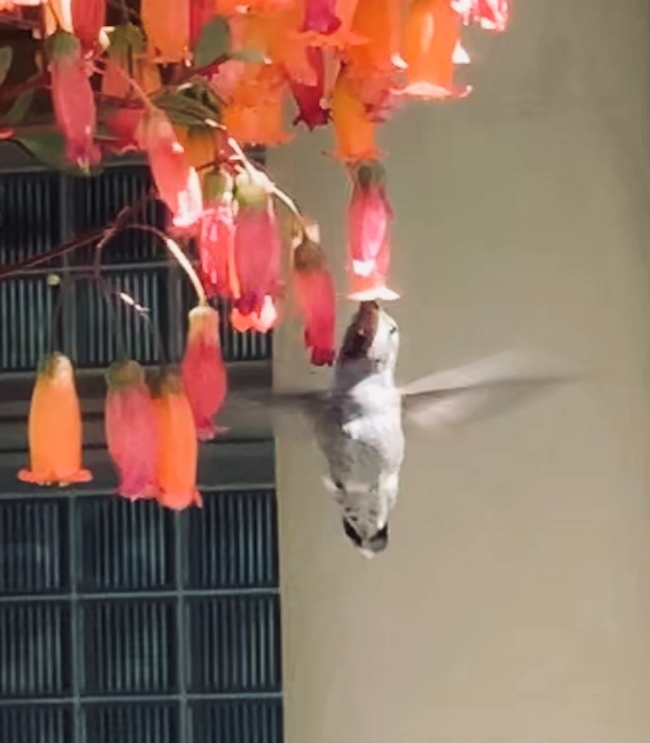
hummer on flowers


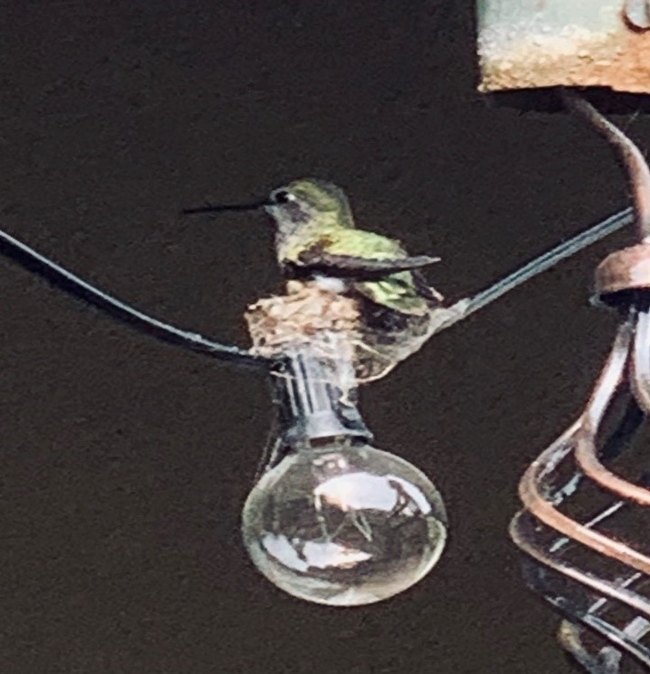
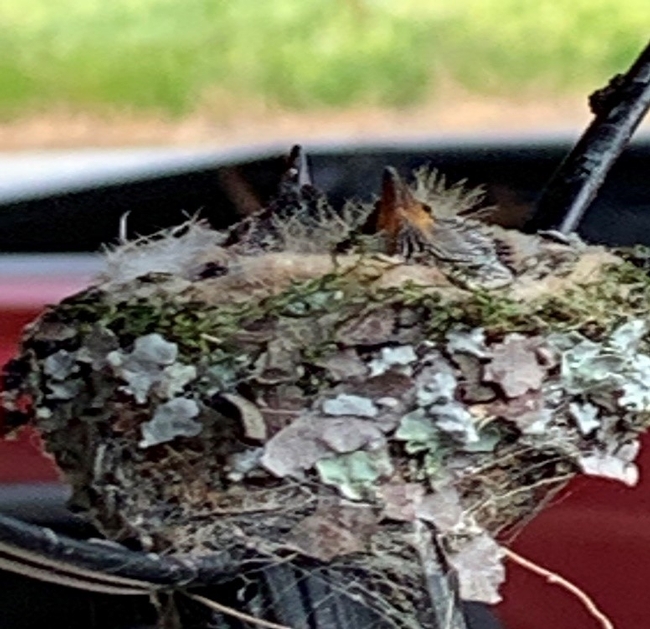
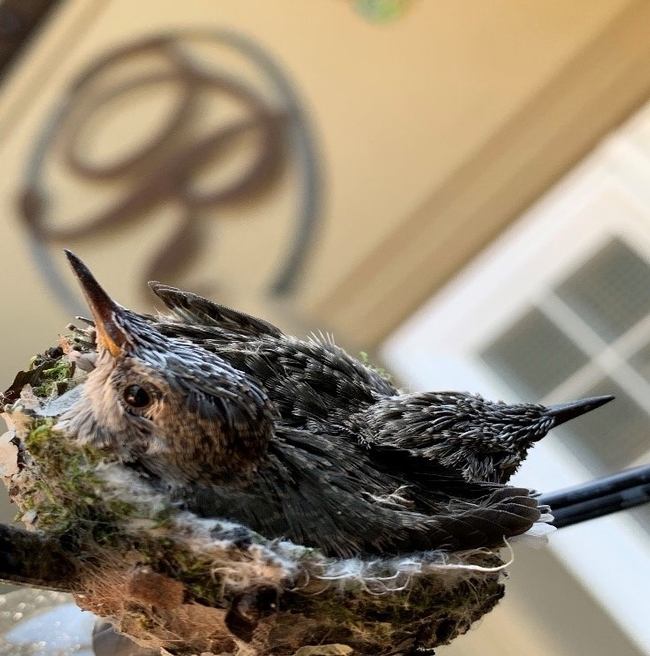
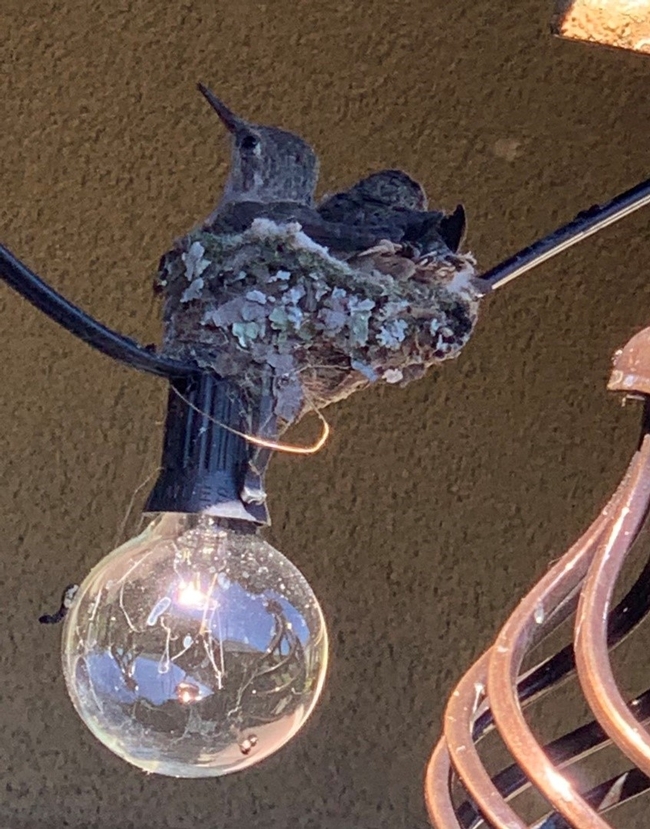
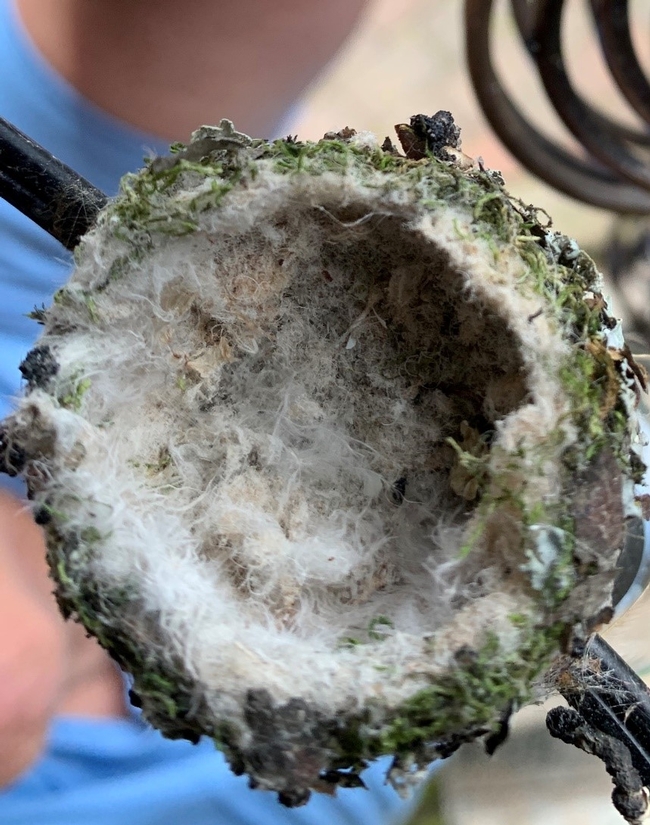
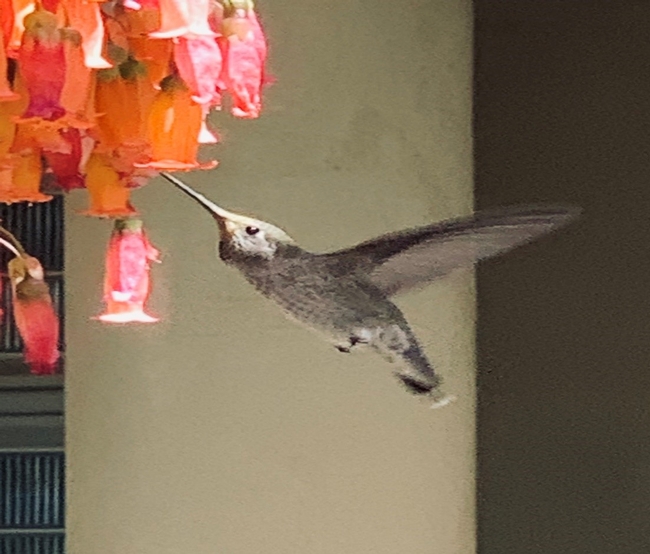
Posted by Laura Spangler on June 4, 2020 at 9:37 AM